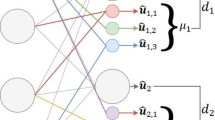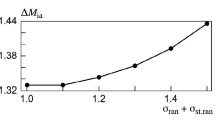Abstract
The purpose of this paper is to introduce a measurement approach of refinement and correctness of probabilistic programs. That is, we define the refinement degree and the correctness degree by the weakest precondition transformers. This kind of measurement indicates the degree that a program is refined by another and the degree that a program is correct with respect to a pair of precondition and postcondition. Some properties of this measurement, for example continuity, are discussed.
Similar content being viewed by others
Explore related subjects
Discover the latest articles and news from researchers in related subjects, suggested using machine learning.References
Dijkstra E W. A Discipline of Programming. Englewood Cliffs: Prentice Hall International, 1976
Back R J, Von Wright J. Refinement Calculus: A Systematic Introduction. New York: Springer-Verlag, 1998
Kozen D. Semantics of probabilistic programs. Journal of Computer and System Science, 1981, 22: 328–350
Kozen D. A probabilistic PDL. Journal of Computer and System Science, 1985, 30: 162–178
Jones C. Probabilistic non-determinism. PhD thesis. Edinburgh: University of Edinburgh, 1990
Hoare C A R. An axiomatic basis for computer programming. Communications of the ACM, 1969, 12(10): 576–580
He J F, Seidel K, McIver A K. Probabilistic models for the guarded command language. Science of Computer Programming, 1997, 28: 171–192
Morgan C, McIver A K, Seidel K. Probabilistic predicate transformers. ACM Transactions on Programming Languages and Systems, 1996, 18: 325–353
McIver A K, Morgan C. Partial correctness for probabilistic demonic programs. Theoretical Computer Science, 2001, 266: 513–541
McIver A K, Morgan C. Demonic, angelic and unbounded probabilistic choices in sequential programs. Acta Informatica, 2001, 37(4–5): 329–354
Tix R, Keimel K, Plotkin G. Semantic domains for combining probability and non-determinism. Electronic Notes in Theoretical Computer Science, 2005, 129: 1–108
Keimel K, Rosenbusch A, Streicher T. A Minkowski type duality mediating between state and predicate transformer semantics for a probabilistic nondeterministic language. Annals of Pure and Applied Logic, 2008
Ying M S. Reasoning about probabilistic sequential programs in a probabilistic logic. Acta Informatica, 2003, 39: 315–389
Chen Y X, Wu H Y. Semantics of sub-probabilistic programs. Frontiers of Computer Science in China, 2008, 2(2): 29–38
Gierz G, et al. Continuous Lattices and Domains. Cambridge University Press, 2003
Author information
Authors and Affiliations
Corresponding author
Rights and permissions
About this article
Cite this article
Wu, H. Measurement of refinement and correctness. Front. Comput. Sci. China 3, 465–471 (2009). https://doi.org/10.1007/s11704-009-0016-4
Received:
Accepted:
Published:
Issue Date:
DOI: https://doi.org/10.1007/s11704-009-0016-4




